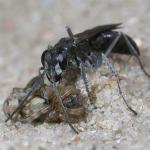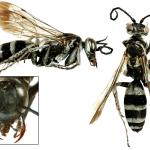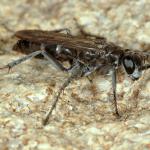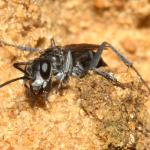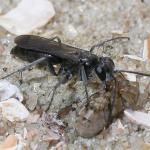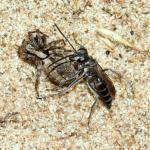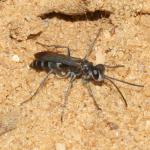Widely distributed in Britain and Ireland, but rather coastal. The range extends northwards to central Scotland (Ayr, Fife and East Lothian). It is also found on the Channel Islands.
The wasp occurs throughout Europe and the Near East (Wolf, 1972).
This species is not regarded as being scarce or threatened.
Day, 1988 is the standard work for identifying British Pompilidae. Wiśniowski, B., 2009 is also useful.
Found widely on coastal sand dunes, also inland in sand pits and sandy heaths with bare sand exposures. The wasp shows a marked preference for loose sand and can be found in large numbers on sheltered, sunny areas in dune systems.
May to September.
Nests are stocked with a single spider. These are generally Lycosidae; Clubionidae, Thomisidae and Pisauridae are taken less often (Day, 1988).
This wasp rapidly excavates a nest burrow in loose sand, using the tarsal comb to rake back the sand grains. If the sand is damp the grains are first loosened with the mandibles. After capture, the spider is temporarily buried whilst a suitable nest burrow is excavated. The spider recovers partially after interment and wanders across the surface of the closed cell until it is finally killed by the wasp larva feeding on its abdomen. The silk laid down by the spider during this period binds together the sand grains and maintains the structure of the cell in the loose sand (Day, 1988).
No information available.
2001


